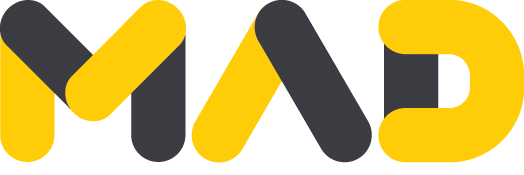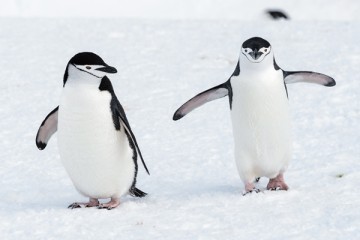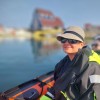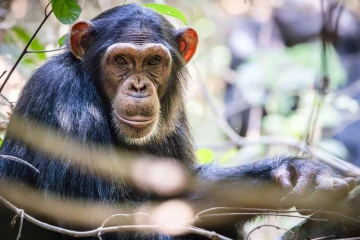All about the Make a Difference Project!
Devised as a way to aid those who aren’t able to gain financial assistance through traditional means, microfinancing is the act of securing start-up loans for prospective small business owners. Usually, this is a service that’s tailor-made for low-income individuals who have the potential to start and run an enterprise but lack the means to accumulate start-up funds and don’t have enough assets to apply for a classic bank loan.
At Viva Expeditions, we are proud to be collaborating with Kiva and the Make a Difference (M.A.D.) Project.
Click the links below to skip through the article:
- How does microfinancing work?
- Why is microfinancing so successful?
- Why Kiva?
- Introducing the M.A.D.

How does microfinancing work?
A widespread movement first devised by Nobel Peace Prize-winning economist Muhammad Yunus in 1976, microfinancing is primarily developed in poorer countries and is, essentially, a way to supply small loans at low interest to unemployed, low-earning or socially-marginalised entrepreneurs. The World Bank estimates that over half a billion people all over the world have benefitted from microfinancing since its inception, with approximately half of the total number of beneficiaries rising out of extreme poverty as a consequence.
A huge part of the success of microfinancing, all over the world, is that it doesn’t only provide aid but also includes financial advice which must be adhered to, thus tackling known problems before they even arise. Unlike what many may imagine, microfinancing isn’t about ‘throwing money at people and hoping it’s wisely utilised’. By its very definition, it is a multi-tiered assistance plan which involves helping people calculate and carry through a saving and repayment plan, as well as taking proactive measures to ensure the money is not only spent well but also reinvested – perhaps used to purchase more stock or buy insurance.
A common example used to explain this concept involves a microfinancing programme in Kenya, whereby 15 women, who worked together in a co-operative, would pay USD 1 a day toward a communal savings plan. Every fortnight, one woman would receive the savings, in a lump sum, and would be advised on how best to invest it in her business. This organised way for every woman to essentially save $ 30 a month may seem simplistic to outsiders but when you consider that the wise handling of money is a luxury bestowed only on those who have enough of it, it quickly becomes obvious how important it really is. Generally speaking, those who live on or below the poverty line have no concept of saving and investing, simply because they’ve never experienced life with (even slightly) more money than they’d need to survive on a daily basis. Teaching people how to handle money, therefore, is part and parcel of microfinancing.
As opposed to traditional, old-school lending, microfinancing is a peer-to-peer economy, whereby loans are given either by individuals or groups of individuals. Some people will invest their money in microfinancing services whilst others will simply donate to one. By and large, however, the primary goal for investing or paying into a microfinancing organisation is humanitarian assistance rather than financial gain.
Further services offered in conjunction with microloans include:
-
Interest-free repayments (the company with whom we’ve teamed up is one such enterprise)
-
Savings accounts with no minimum balance
-
Financial literacy courses (hands-on courses on book-keeping and cashflow management, as described above)
-
Help to secure a mobile phone and internet connection (a fantastic way to make microfinancing available to those living in remote regions of the world)
Why is microfinancing so successful?
When it comes to life in developing countries, you may be surprised to learn that amounts as low as USD 60 can literally turn a person’s life around. One of Kiva’s most prominent success stories is that of a young Paraguayan single mother who initially took out a $60 microloan to set up her own empanada stand. Within just a matter of a couple of years, this entrepreneurial lady had not only paid back the loan but also secured much larger ones from a conglomerate of lenders, eventually expanding her food business to the point where she could afford to open a small restaurant and pay rent for the attached house.
This is what makes microfinancing so successful: we’ve gotten to the point where ‘big’ projects in lesser-developed countries seem endless, so tackling poverty ‘one by one’ is being recognised as the ideal strategy for long-term prosperity. Rather than simply giving ‘aid’, microfinancing is helping poorer people develop the skills to secure a future for themselves and their families.
Why Kiva?
Founded in 2005, Kiva is one of the most recognised, respected and successful microfinancing companies in existence today. They currently operate in over 80 countries and, in just a decade and a half, have helped more than two million people borrow over one billion dollars, boasting a return payment rate of 97%. Kiva offers various lending categories which means lenders can choose a cause that is close to their hearts, be it specifically involving women, the agriculture sector, eco-friendly initiatives, arts, livestock and more. You can take a look at the category for women to understand the kind of loans and amounts that Kiva seeks to lend.
Viva will make a $5 donation to Kiva from every booking received and we’ve chosen to sponsor women-based projects in Latin America. Microfinancing female business owners is tipped to be hugely beneficial to bridging the gap of gender equality and that’s why many microfinancing initiatives are specifically targeted to them. Empowering women to take charge of their finances and lives is thought to have a greater impact on the wellbeing of children, leading the way to not only greater gender equality but a better standard of living for men and women alike.
Introducing the M.A.D. Project
The Make a Difference Campaign is a charity created by our sister company in Australia. It covers a wide variety of social, economic and environmental projects in Latin America, each one aimed at tackling a specific problem in the region, be it by sponsoring charities which offer aid and protection to at-risk children in Peru and Mexico or by helping to fund the reforestation of the Vilcanota Mountain Range in the Central Andes. M.A.D. has also provided over 750 microfinancing loans through Kiva and it is in this particular cause that we are lending a hand.
Laura Pattara
Laura Pattara writes for Viva Expeditions with a special love for all things Latin America. She had guided overland tours across the continent, reached Machu Picchu five times on foot, and even dressed up as a giant toucan for Carnaval. With a degree in languages and two decades of global travel experience behind her, Laura has a long-standing love for the Andes, soaring condors, and a truly delicious empanada.
|




